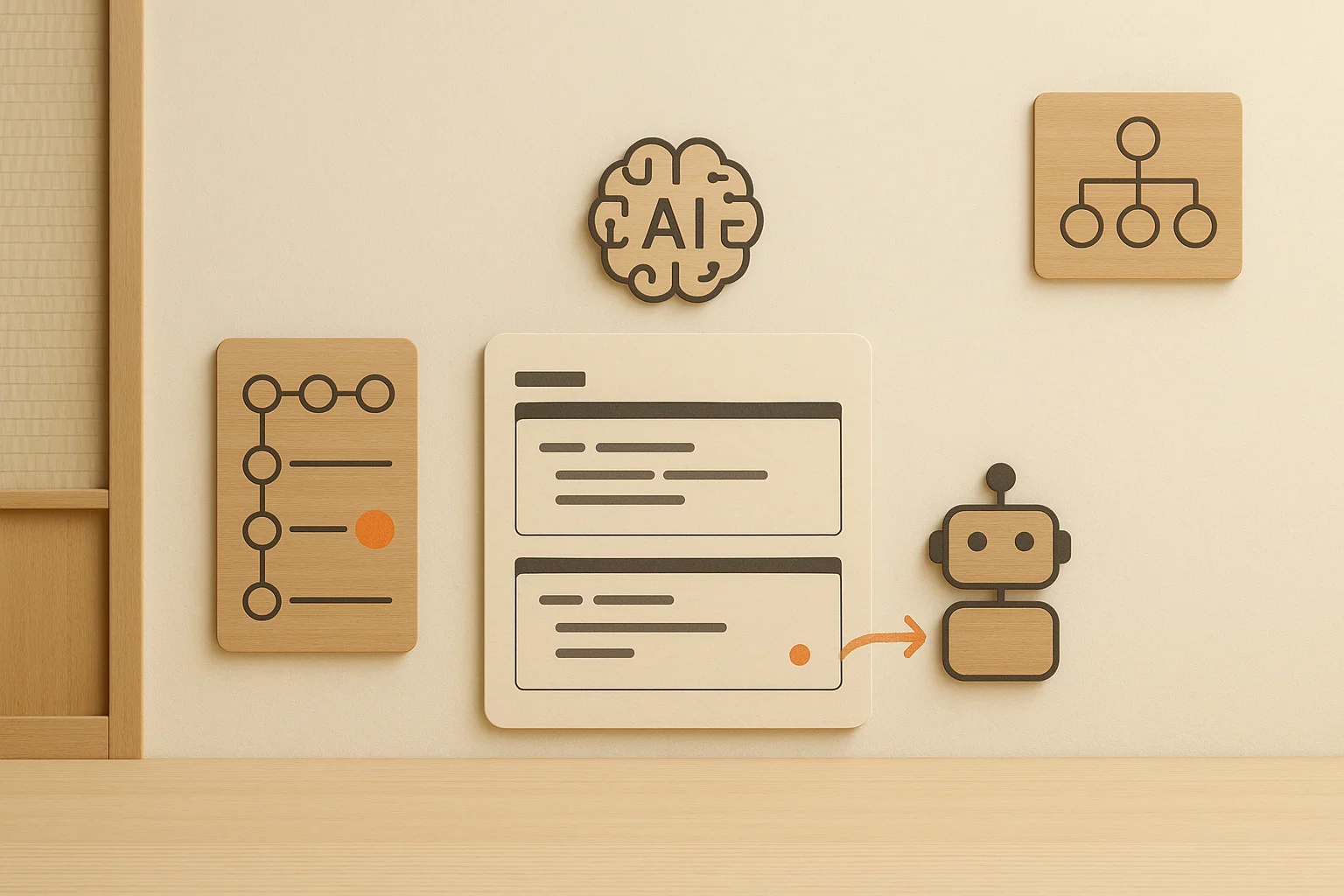How to Reduce PR Cycle Time: 8 Proven Strategies for Faster Code Reviews

Shipping code quickly and efficiently is the lifeblood of any successful software development team. But what happens when your Pull Request (PR) process becomes a bottleneck, slowing down progress and frustrating developers? A lengthy PR cycle can significantly impact your team's velocity and overall project timelines. This article will guide you through the key phases of the PR cycle, highlighting common pain points and offering practical solutions on how to reduce PR cycle time.
Key Takeaways
- •Prioritize smaller pull requests: Shorter, more focused PRs dramatically improve review efficiency, simplify testing, and streamline deployments.
- •Communicate clearly and automate strategically: Open communication between developers and reviewers, paired with automated notifications, keeps the process flowing smoothly.
- •Track and analyze your PR cycle time: Regular monitoring provides actionable insights for continuous improvement and data-driven optimization.
What is PR Cycle Time?
In software development, "PR" stands for Pull Request. A pull request is how developers propose changes to a codebase—a formal request to merge code updates into the main project. Understanding this is key to grasping PR cycle time.
PR cycle time measures how long it takes for a pull request to go from creation (when a developer first submits changes) to completion (when those changes are integrated into the main code branch). This encompasses the entire journey of a code change, from the initial coding to final deployment. It's a crucial metric for assessing the efficiency and speed of your development workflow.
Why is a short cycle time so important? It reflects a streamlined process and an effective team, often correlating with greater stability and allowing your team to quickly pinpoint and address bottlenecks. This agility enables you to respond to emerging issues and implement changes rapidly. Effective communication and automation are crucial for reducing PR cycle time.
The Four Phases of PR Cycle
Optimizing your pull request cycle is key to shipping features faster and iterating quickly. Let's break down the four key phases of a typical PR cycle and identify areas for improvement.
1. Coding Phase
This phase encompasses the time a developer spends writing code for a specific feature, bug fix, or task. It starts when a developer begins working and ends when they create a pull request. Long coding times often stem from large or complex tasks. The solution is to break down work into smaller, more manageable chunks. Think of it like tackling a big project—it's much less daunting when divided into smaller steps.
2. PR Pickup Phase
Once a developer submits a pull request, it enters the pickup phase. This is the time it takes for the PR to be acknowledged and picked up by a reviewer. Delays here often happen because PRs go unnoticed, reviewers are overloaded, or the PR itself is too large. Automated notifications can help ensure PRs don't get lost, while balanced workload distribution prevents reviewers from becoming bottlenecks.
3. PR Review Phase
The review phase is where other developers examine the proposed code changes, provide feedback, and ultimately approve the PR. This stage can become a major bottleneck if not managed effectively. The key to a smooth review process is ensuring your team understands the value of prompt reviews. Best practices suggest keeping PRs under 225 lines of code.
4. Deployment Phase
After a PR is approved, it moves to the deployment phase. This involves merging the code into the main branch and deploying it to a staging or production environment. Bottlenecks in this phase often arise from limited personnel available to merge code, inefficient testing processes, and large code changes. By optimizing each of these four phases, you can significantly reduce your overall PR cycle time.
Common PR Cycle Bottlenecks
Before we dive into solutions, let's identify some common bottlenecks that can slow down your PR cycle. Understanding these roadblocks is the first step to streamlining your workflow.
Large, Complex Pull Requests
Massive pull requests are a major culprit in lengthy PR cycles. They're daunting for reviewers, who have to wade through hundreds (or even thousands) of lines of code. This can lead to slower reviews, missed bugs, and decreased code quality. Smaller, more frequent commits make the review process much more manageable.
Insufficient Reviewers
Having too few reviewers creates another bottleneck. When only a handful of senior engineers are responsible for reviewing all PRs, it creates a backlog. Distributing the review workload across more team members not only speeds up the process but also provides valuable learning opportunities for less experienced developers.
Inefficient Testing Processes
Testing is a critical part of the PR cycle, but inefficient testing procedures can create significant delays. Whether it's slow test suites, manual testing bottlenecks, or simply a lack of clear testing protocols, these issues can significantly impact your cycle time. Faster, more efficient testing is key to a streamlined workflow.
Communication Breakdowns
Poor communication can stall the entire PR process. Misunderstandings, unclear feedback, and a lack of transparency can lead to revisions, delays, and frustration. Effective communication, combined with automation, can significantly reduce friction and speed up reviews.
Strategies to Reduce Coding Time
Long coding times often lead to frustration and delays in the entire pull request process. Here are practical strategies to help your team write code more efficiently:
Break Down Tasks
Large, complex coding tasks can be daunting and contribute to longer coding times. Break these tasks into smaller, more manageable chunks. This makes the overall project less intimidating and allows developers to focus on completing individual pieces more quickly. Think of it like tackling a complex jigsaw puzzle—it's much easier when you focus on assembling small sections at a time.
Implement Pair Programming
Pair programming, where two developers work together on the same code, can be a valuable technique for reducing coding time and improving code quality. Having two sets of eyes on the code in real time can help catch errors early on and prevent bigger issues down the line. This collaborative approach fosters immediate feedback and knowledge sharing.
Use Code Templates and Snippets
Code templates and snippets can be incredibly helpful for streamlining the coding process. These pre-written blocks of code for common tasks can save developers significant time and effort, allowing them to focus on the unique aspects of their work. Using a pull request template ensures all the necessary information is included.
Automate Repetitive Tasks
Automation is a game-changer when it comes to reducing coding time. Identify repetitive tasks and automate them. This frees up developers to focus on more complex and creative work. This could involve anything from automating testing procedures to setting up a robust CI/CD pipeline.
Improving PR Pickup and Review Times
A slow review process can significantly impact your team's velocity and overall project timelines. Here are actionable strategies to streamline your PR process:
Set Up Automated Notifications
One of the simplest ways to improve PR pickup and review times is to set up automated notifications. These notifications can alert reviewers when a PR is ready, reducing the chances of it sitting unnoticed. Tools like LinearB can automate this process, ensuring your team is aware of pending reviews.
Balance Reviewer Workloads
Overburdened reviewers can lead to significant delays. Distribute review responsibilities evenly across your team to ensure that no single person becomes a bottleneck. Consider using a project management tool or a dedicated PR platform to track reviewer workloads and assign reviews strategically.
Encourage Smaller, Focused PRs
Large, complex pull requests can be daunting for reviewers. Encourage your team to break down large changes into smaller, more focused commits. This practice makes reviews easier and simplifies identifying and addressing potential issues. Smaller PRs are less intimidating and allow reviewers to provide more thorough feedback.
Establish Clear Review Guidelines
Having clear review guidelines ensures consistency and efficiency in the process. These guidelines should outline expectations for code style, testing, and documentation. When everyone is on the same page, reviews become more streamlined and less prone to subjective interpretations.
Optimizing the Deployment Process
Once code is reviewed and approved, it's time to optimize the deployment process. This final stage significantly impacts the overall PR cycle time. A streamlined deployment process ensures that changes are released quickly and efficiently.
Streamline Merging Procedures
Merging code can sometimes become a bottleneck. Ensure your team understands the importance of prompt merging after approval. Distributing merge responsibility among team members can prevent delays. Clear communication about merge readiness and any potential conflicts is crucial for a smooth workflow.
Enhance Testing Efficiency
Thorough testing is essential, but it shouldn't drag down your cycle time. Optimize your testing procedures by identifying and eliminating any redundant tests. Prioritize automated testing to catch regressions early and speed up the feedback loop.
Implement Automated Testing
Automation is key to optimizing your deployment pipeline. Automated testing tools can run tests as soon as code is merged, providing immediate feedback and catching errors before they reach production. This also frees up developers to focus on other tasks.
Essential Tools and Technologies
Optimizing your PR cycle isn't just about process improvements; it's also about using the right tools. Here are some key technologies that can streamline your workflow:
Version Control Systems
A robust version control system like Git is fundamental to any efficient PR process. It provides a clear history of changes, facilitates collaboration, and simplifies merging code. Make sure your team understands how to use these features effectively.
Code Review Platforms
Dedicated code review platforms like GitHub, GitLab, or Bitbucket offer structured workflows for managing pull requests. They centralize discussions, allow for inline comments and suggestions, and integrate with other tools in your development pipeline.
CI/CD Tools
Continuous Integration and Continuous Delivery (CI/CD) tools automate building, testing, and deploying code changes. This automation is crucial for reducing cycle time and minimizing manual intervention. Popular CI/CD tools include Jenkins, CircleCI, and Travis CI.
PR Tracking and Reminder Tools
Tools like LinearB offer features specifically designed to manage and track pull requests. They can help you monitor PR sizes, send automated reminders about pending reviews, and visualize team workloads to prevent burnout.
Measuring and Monitoring PR Cycle Time
After implementing strategies to optimize your PR process, consistent measurement and monitoring are crucial. This helps you understand the impact of your efforts and identify areas for further improvement.
Key Metrics to Track
PR cycle time is a crucial indicator of team efficiency. Track the time spent in each phase of the PR cycle: coding, PR pickup, review, and deployment. This breakdown helps pinpoint bottlenecks and areas where improvements are most needed.
Set Realistic Goals
While the goal is always to reduce PR cycle time, it's important to set realistic expectations. Setting achievable goals for improvement, rather than aiming for drastic overnight changes, is more sustainable and motivating for your team. Start small and gradually work towards more ambitious targets.
Use Data to Drive Improvements
Regularly review your PR cycle time data to identify trends and patterns. This data-driven approach helps you understand which strategies are most effective and where further adjustments are needed. This iterative approach ensures continuous improvement and helps you create a highly efficient PR workflow.
Building a Culture of Efficiency
A streamlined PR process isn't just about tools and techniques—it's about fostering a culture that values efficiency. When your team is aligned and empowered, the entire PR workflow benefits.
Foster Open Communication
Open communication is the bedrock of efficient PR processes. Teams that communicate effectively move faster. Encourage open dialogue about roadblocks, challenges, and potential solutions. When developers can readily ask reviewers for clarification or discuss alternative approaches, it prevents misunderstandings and speeds up the review process.
Encourage Knowledge Sharing
Knowledge silos kill efficiency. Cultivate a culture of knowledge sharing where team members readily share expertise and best practices. This reduces the time spent searching for information or reinventing the wheel. When everyone is on the same page, it leads to more consistent code, fewer errors, and faster reviews.
Prioritize PR Reviews
Make PR reviews a priority, not an afterthought. Often, reviews get pushed aside in favor of other tasks, leading to delays and frustration. When reviews are treated as a critical part of the development process, they get done promptly and thoroughly.
Conduct Regular Process Reviews
Even the best processes can become stale. Regularly review your PR workflow to identify areas for improvement. Ask your team for feedback on what's working and what's not. Look for bottlenecks, pain points, and opportunities to streamline.
Frequently Asked Questions
What is Pull Request (PR) Cycle Time?
PR Cycle Time refers to the time it takes for a pull request to go from creation to completion. This includes coding, review, and deployment. Monitoring this metric helps identify inefficiencies and optimize the development process.
Why is reducing PR Cycle Time important?
Reducing PR Cycle Time speeds up the delivery of features and fixes, ensuring a quicker response to issues. It also helps maintain code quality and keeps projects on track. Teams with shorter cycle times can deliver more value in less time.
How can smaller PRs improve cycle time?
Smaller PRs are easier to review and test, which speeds up the entire process. Large PRs can overwhelm reviewers, leading to delays and missed errors. Keeping PRs small ensures faster reviews and quicker feedback.
What role does automated testing play in reducing cycle time?
Automated testing speeds up the validation process by quickly identifying bugs and errors. This reduces manual testing time and allows for faster feedback, making the review process more efficient.
How can tracking PR metrics lead to improvements?
By tracking key PR metrics, teams can identify areas where bottlenecks occur, such as coding or review times. This data helps pinpoint inefficiencies and implement solutions, leading to a more optimized process.
Ready to Transform Your Code Review Process?
See how Propel's AI-powered code review helps engineering teams ship better code faster with intelligent analysis and actionable feedback.


